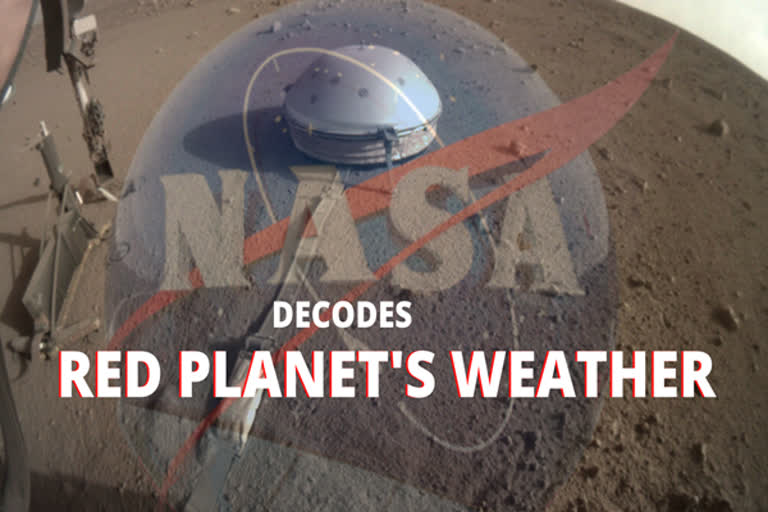New York: NASA's InSight lander which touched down on the Martian equator in November last year has revealed secrets about the Red Planet's weather patterns including details about its surface tornadoes and the steady, rumble of low-frequency sounds on the planet.
The research, published in the journal Nature Geoscience, noted that Mars experiences strong daily pressure and temperature fluctuations, stronger than on the Earth.
"The atmosphere is so thin that it can heat up and cool down much faster than on Earth. This is entirely new territory we are exploring," said Don Banfield, lead author of the study from Cornell University in the US.
The researchers noted that about a month after landing, InSight endured a large dust storm -- a periodic global event on Mars which they said, could dramatically change the Red Planet's weather and climate.
The scientists noted daily changing winds controlled by the seasonal freezing and thawing of the carbon dioxide in the Martian polar caps.
InSight's onboard equipments included a seismometer for detecting Mars' quakes, sensors for gauging wind and air pressure, a magnetometer for measuring the planet's magnetic forces and a probe designed to take the planet's temperature, the American space agency had said in a statement.
Read Also:US teen discovers new planet while a NASA intern
Banfield and his team assessed measurements taken by InSight and detected atmospheric gravity waves which are oscillations of air molecules similar to how water wavelets form when a pebble is dropped in a puddle.
They said such gravity waves on the Earth can create linear rows of rolled morning glory clouds -- white, puffy clouds that look like lofty jelly rolls.
"We're still working to understand what these waves can teach us about Mars," Banfield said.
